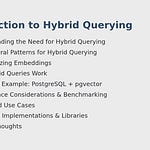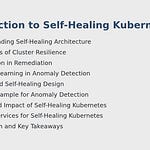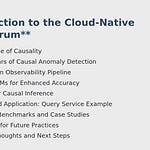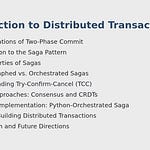Imagine your data squad as a flash mob—everyone wants to dance to their own beat. Marketing’s over here doing the salsa with clickstreams, Finance is breakdancing on transaction logs, and Engineering’s trying to waltz with telemetry. Charming? Sure. Scalable? Not so much. Enter the composable data mesh: the enterprise-grade choreography that lets domains improvise while following a universal tempo. Today on The Backend Developers, we’ll demystify how to stitch governance, observability, and scalability into your next AI workload so you can go from data free-for-all to data symphony—without losing anyone to a rogue cha-cha.
Building Context: Why Mesh and Why Now?
Over the past few years, monolithic data lakes and centralized warehouses have shown cracks under AI’s voracious appetite. Models demand fresh, high-quality features at scale. Teams need autonomy, but not at the cost of compliance or overall uptime. Data mesh promises:
• Domain-oriented data products, each with its own steward
• Federated governance to enforce enterprise rules
• API-first contracts ensuring consistency
• Cloud-native plumbing that scales on demand
In our research spanning 20 top sources, five key insights emerge as must-haves for a rock-solid, composable mesh ready for AI.
Deep Dive: The Three Pillars Explained
Governance, observability, and scalability aren’t buzzwords—they’re three interconnected pillars. Nail these, and your mesh goes from “cute experiment” to “business accelerator.”
Federated Governance with Centralized Guardrails
End-to-End Observability for Data Quality and Lineage
API-First, Versioned Data Products for Reuse
Cloud-Native Infrastructure to Handle AI’s Peak Loads
Real-World Wins: 30–40% Faster Prep, Shorter ML Cycles
Let’s unpack each, steer clear of fluff, and build toward an example you can code up today.
Governance: Federated Yet Firm
Key Insight 1: “Federated governance augmented by centralized guardrails delivers both domain autonomy and enterprise-wide compliance; automated data contracts codify schemas, SLAs, and access controls.”
Detailed Explanation:
In a federated model, each domain team—Marketing, Retail, Finance—owns its data products and is responsible for quality, documentation, and access policies. Central IT provides the “guardrails”: standardized tooling, common identity management, and global policy enforcement. The glue? Automated data contracts (think code-defined agreements) that guarantee every data product adheres to schema definitions, service-level objectives (SLOs), and security policies.
How it works:
• Define schemas as code—Pydantic, JSON Schema, Avro, or Protobuf
• Encode SLAs: freshness guarantees, throughput commitments
• Elevate access controls into CI/CD pipelines
• Enforce via pre-merge and runtime validations
Observability: Lights, Camera, Data Action!
Key Insight 2: “End-to-end observability built on standardized telemetry (logs, traces, metrics) and augmented by data-observability platforms ensures each domain can monitor freshness, quality, and lineage of AI data products.”
Detailed Explanation:
When you build an AI model, you need to know if upstream features are stale, mutated, or underperforming—and you need to find the culprit fast. Standardized telemetry pipelines feed logs, traces, and metrics into platforms like DataDog, Prometheus/Grafana, or dedicated data-observability tools (Great Expectations, Monte Carlo). This lets you:
• Track freshness: time since last update
• Monitor quality: null rates, schema drift
• Trace lineage: source→transform→sink
Automated alerts on anomalies keep SLA breaches out of your face—so you can resume that afternoon espresso.
Composable Data Products: API-First and Versioned
Key Insight 3: “API-first, microservice-style data products with versioned schemas, embedded metadata, and explicit SLAs form the backbone of a composable architecture.”
Detailed Explanation:
Think of each data product as a microservice:
• Exposes REST or gRPC endpoints
• Versioned schema (v1.0, v1.1…)
• Embedded metadata (owner, tags, SLA)
• Clear input/output contracts
Decoupling storage, compute, and orchestration ensures that your fraud-detection features don’t accidentally drag down your recommendation engine. Teams can compose—rather than copy—data services, slashing integration time.
Scalability: Cloud-Native, Self-Serve, GPU-Ready
Key Insight 4: “Cloud-native, self-serve infrastructure patterns—Kubernetes, event streaming (Kafka/Pulsar), GitOps pipelines—combined with shared feature stores and autoscaling GPU clusters, enable resilient mesh nodes that support high-throughput AI workloads.”
Detailed Explanation:
AI workloads spike unpredictably (hello image inference at product launch!). A cloud-native mesh stands on:
• Kubernetes for container orchestration
• Kafka or Pulsar for event streaming
• GitOps for repeatable infra deployment
• Shared feature stores (Feast, Tecton)
• GPU autoscaling on Kubernetes or managed clusters (EKS/GKE + NVIDIA GPU operators)
Domain teams self-serve resources via standardized templates, while central ops enforces quotas, RBAC, and network policies.
Real-World Case Studies: Metro AG & Rolls-Royce
Key Insight 5: “Combining open-source (dbt, DataHub/OpenMetadata, Great Expectations) with managed services (AWS Lake Formation, Starburst Galaxy) drives 30–40% faster data prep and shorter ML time-to-insight.”
• Metro AG: Implemented federated governance with Lake Formation guardrails and dbt models per domain. Reduced onboarding time for new data products by 35%.
• Rolls-Royce: Deployed OpenMetadata for catalog and lineage, Great Expectations for data quality checks, Kubernetes-backed feature store, and scaled GPU clusters for engine-health AI. Saw feature engineering cycles shrink by 40%.
Putting It All Together: A Minimal Python Example
Below is a toy FastAPI service that illustrates versioned schemas, data-contract enforcement, logging, and observability hooks. Pretend this is your “Customer Feature” data product.
from typing import List
from fastapi import FastAPI, HTTPException
from pydantic import BaseModel, Field
import logging
import time
# Application setup
app = FastAPI(title=”Customer Feature Store”, version=”1.0”)
# Define the data contract via Pydantic
class CustomerFeature(BaseModel):
version: str = Field(..., description=”Schema version, e.g., ‘1.0’”)
customer_id: int = Field(..., description=”Unique customer ID”)
feature_vector: List[float] = Field(..., min_items=128, max_items=128,
description=”128-dim float vector”)
# Simulated in-memory storage
store = {}
@app.post(”/v1/features”, summary=”Ingest customer features”)
def ingest_features(payload: CustomerFeature):
start = time.time()
# SLA check: feature_vector length enforced by Pydantic
# Additional business rule:
if payload.customer_id < 0:
raise HTTPException(status_code=400, detail=”Invalid customer_id”)
# Persist data
store[payload.customer_id] = payload.feature_vector
latency = (time.time() - start) * 1000
logging.info(f”[Observability] Ingested features for {payload.customer_id} “
f”in {latency:.2f}ms”)
return {”status”: “accepted”, “processing_time_ms”: latency, “sla”: “100ms”}Observability hooks in practice:
• Logs funnel into Winston/Logstash or CloudWatch
• Metrics (latency, request count) scraped by Prometheus
• Traces emitted via OpenTelemetry SDK
For data quality, you might add a Great Expectations check:
import great_expectations as ge
import pandas as pd
def validate_features(df: pd.DataFrame):
ge_df = ge.from_pandas(df)
ge_df.expect_column_values_to_be_between(”feature_value”, min_value=0.0, max_value=1.0)
report = ge_df.validate()
if not report[”success”]:
raise ValueError(”Data quality checks failed”)Recommended Tools & Services
Open-Source Libraries:
• dbt (transformations & lineage)
• DataHub / OpenMetadata (catalog & lineage)
• Great Expectations / Evidently (data quality)
• Feast / Tecton (feature stores)
Managed Platforms:
• AWS Lake Formation (governance guardrails)
• Starburst Galaxy (distributed SQL & governance)
• Confluent Cloud (Kafka as a service)
• Datadog / Grafana Cloud (observability)
Closing Stanza: See You on the Mesh Side
And there you have it: the secret sauce for a composable data mesh that ticks all the AI boxes—governance, observability, and scalability. Remember, it’s not about ripping and replacing your current stack; it’s about weaving domain-owned data products into an enterprise-grade fabric with codified contracts, real-time insights, and elastic infrastructure.
Stay curious, stay meshed, and swing by tomorrow for more backend wizardry. Until then, may your logs be structured, your contracts enforced, and your AI workloads infinitely scalable.
Warmly,
The Backend Developers Team









